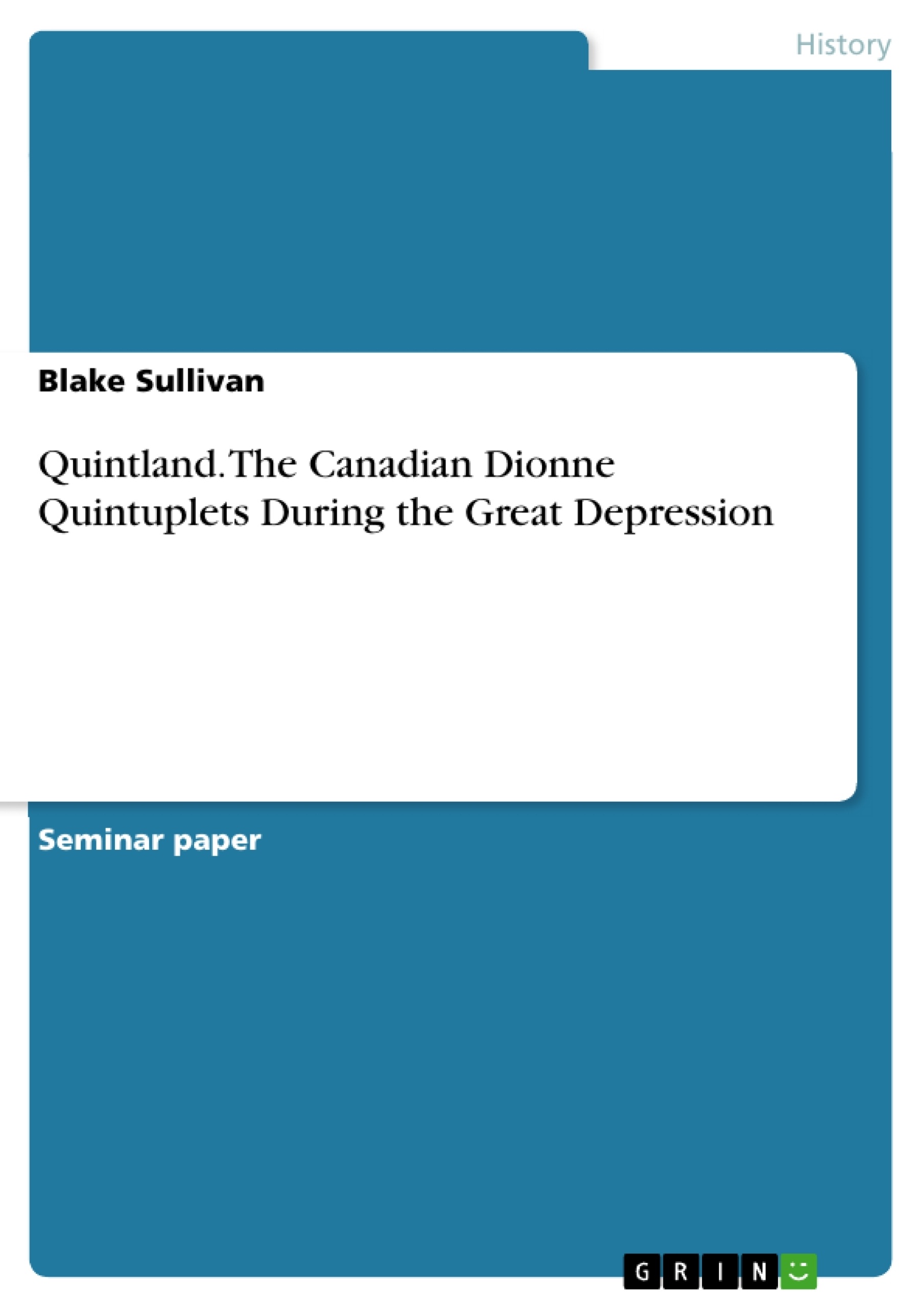The 1930s were very dark and depressing years for most Canadians. The Great Depression had global ramifications and Canada did not avoid the economic strain that was impacting the rest of the world: “millions of Canadians were out of work, and hundred of thousands more struggled to survive on drastically reduced incomes”. With the births of Annette, Cécile, Emilie, Marie and Yvonne Dionne in 1934, the province of Ontario, coupled with Canada, discovered a “Human Goldmine”. From the moment the Quints were born, they were subjected to awful living standards and were abused by the Provincial government for financial gains. But, why were the Dionne Quintuplets and their parents, Elzire and Oliva, manipulated into such a horrible fate? During an era that was struggling economically, the Ontario government took advantage of a very rare event to make short-term financial gains. The small Franco-Ontario hamlet of Corbeil, birthplace of the Quintuplets, became a booming tourist attraction that generated massive crowds and huge sums of money. By analyzing the Ontario government’s political policies during the Great Depression it is evident that the Dionne Quintuplets were unjustly treated as provincial property rather than ordinary children. Specifically, the Ontario Liberal government abused its political power and influence to legally, economically and culturally take advantage of a single family all to bolster its popularity and security in a depressing and dark era.
Content
Bibliography



